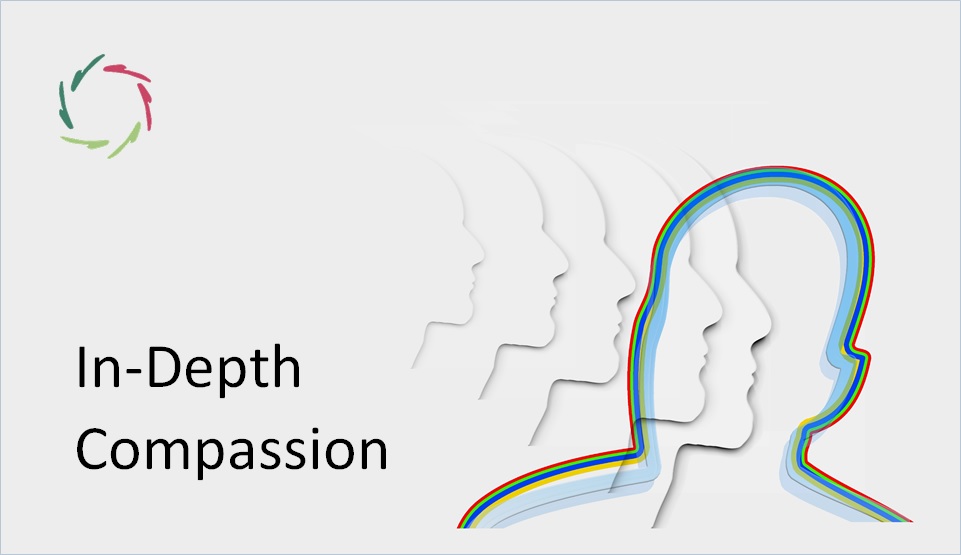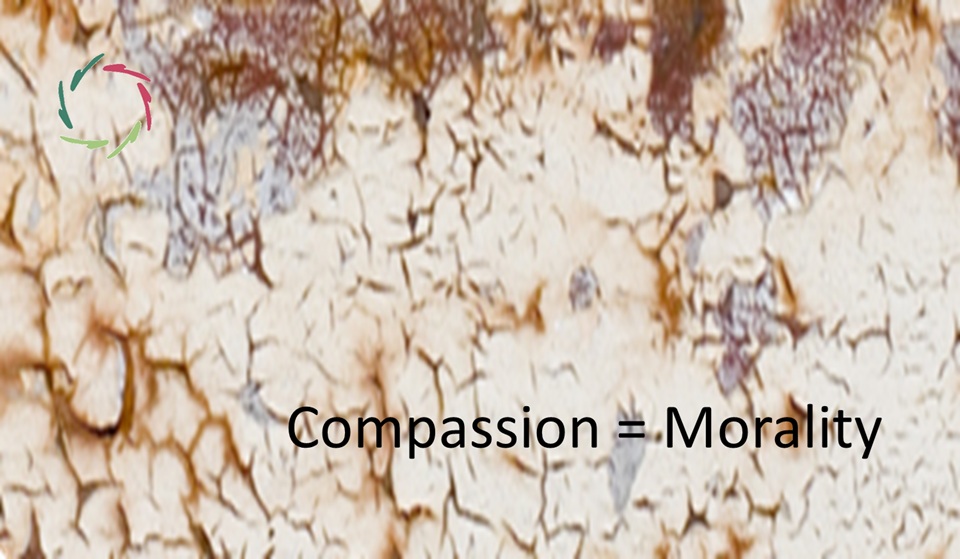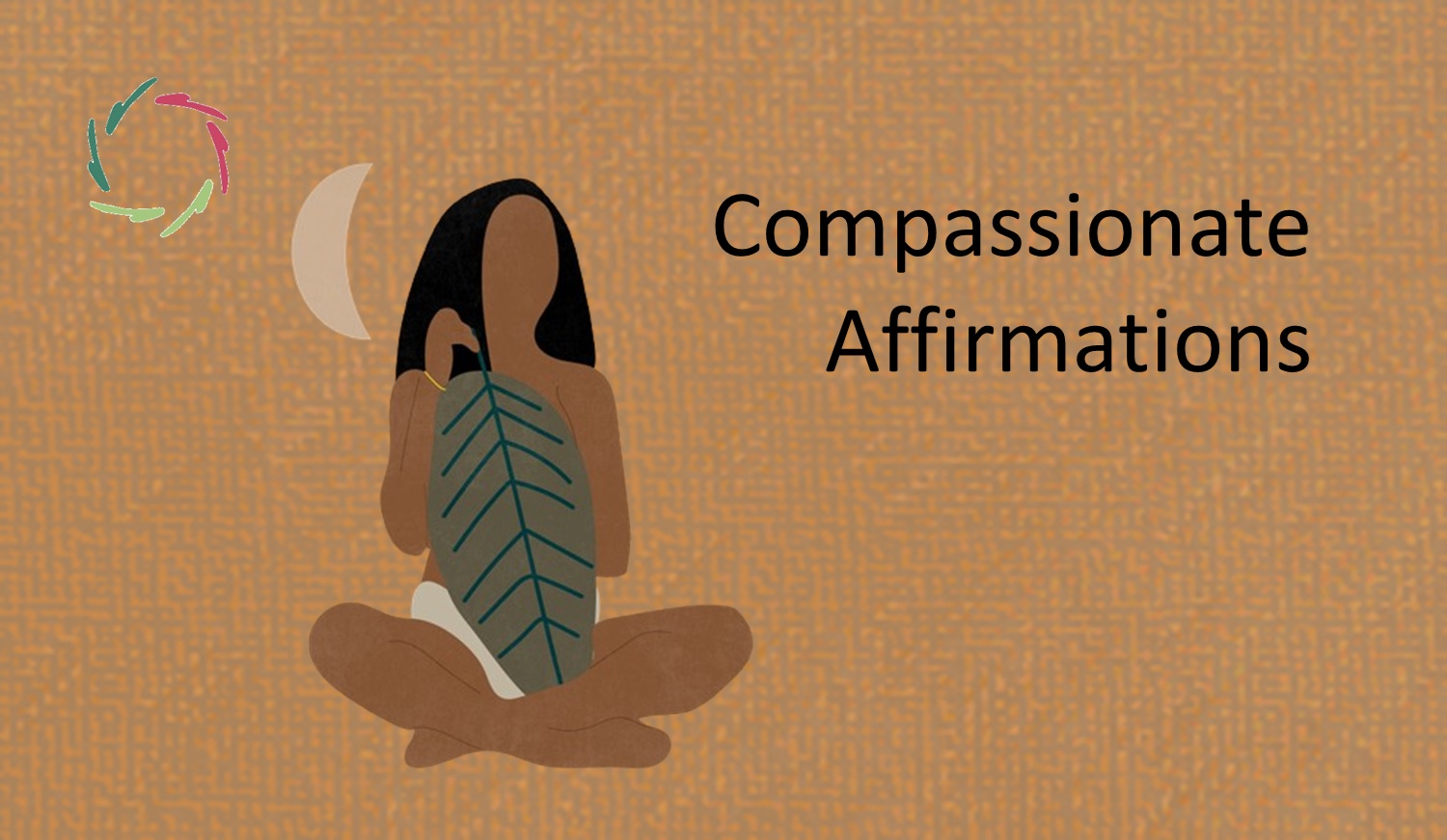In-Depth Compassion

This is a very complex phenomenon. It is very difficult to reach and has very important implications.
The usual view of compassion in relation to empathy
Empathy is usually seen as part of a bigger sum that leads to compassion. This is straightforward, as in this simple scheme:

If we go somewhat more profoundly into the origin of the modern use of ‘empathy’ in the West, we come to the German ‘Einfühlung’ as used by Theodor Lipps, a 19th – early 20th German aesthetic. Lipps referred with this to an act of projecting oneself into, for instance, a painted or verbally described landscape to understand its particular emotional ‘atmosphere.’ He mainly envisioned an art-related activity. This may also be seen further on in Compassion. [see: “Is Compassion Art?”]
Art transcends a purely conceptual description. Its poetry begins where the prose ends.
The concept <Compassion>
I write Compassion with a capital-C when subconceptual mental processing is involved. [see: “Essence of Compassion”] It makes a fundamental difference, bringing Compassion in the realm of the Eastern concept of <Enlightenment>.
This is also according to much of the most modern neurocognitive science. [see: “The Post-Postmodernist Brain”] [see: “From Neurons to Neuronal Networks”]
Additionally, it brings Compassion in close relationship to art, a subconceptual domain par excellence. [see: “About ‘Subconceptual’”] There is no coincidence in this.
Yet, in the above scheme, there is no explicit – nor implicit, basically – mention of anything subconceptual. Therefore, one may see compassion and Compassion as two substantially different concepts. There are huge implications to this.
In-depth, Compassion can go very far.
Without depth, it is a ‘friendly stance,’ but hardly powerful.
Contrary to this, big-c-Compassion is necessary to make this world a better place. [see: “Only Compassion Works”]
Challenges of non-depth
One challenge lies in altruism. Recommendable and highly worthwhile as it is, it is not the same as Compassion. The difference is in-depth. This can make an altruistic person pretty vulnerable as well as ineffective in the end. [see: “Altruism – Compassion”]
Any altruistic person who gets the appropriate insight may happily want to grow towards Compassion and spend much effort doing so. [see: “No Compassion without Growth”]
Challenges in what will not be reached without in-depth Compassion
These are related to not taking into account most of the inner mental universe in many domains.
[see: “The Responsibility of Mind-Science”]
[see: “Imagine: an AURELIS Future”]
Implications to developing Compassion
As a matter of fact, developing Compassion is much less straightforward than developing empathy, with or without action orientation.
This should not be seen as a deterrent but as further motivation. However, indeed, going from compassion to Compassion, there is a very long path. [see: “Practicing Compassion”] Never mind any denigration of those who do not see this. Their path is way much longer.
Towards sustainable Compassion
Over the years, in the West at least, attention for Compassion waxes and wanes. At present, possibly also due to COVID issues, it gets more attention than a few years ago. It would be interesting to keep this attention for a long time.
I fear that with little-c-compassion, not enough power will be reached to make this come true. Interest may wax for a while, but it will wane again, with absolute certainty, if we don’t grow towards Compassion. That is very much a pity!
We direly need in-depth Compassion
This is the only viable antidote against rampant inner dissociation. [see: “Compassion: Relief of Dissociation“]
In this sense, of course, it is also what AURELIS is about. [see: “What AURELIS is About”]


